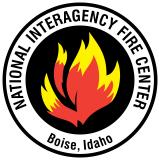California-Nevada Drought & Climate Outlook Webinar: May 22, 2023
According to the May 16 U.S. Drought Monitor, only 12.6% of California/Nevada is in drought, down from 99% at the start of the water year (October 2022). Drought primarily remains now in parts of southeastern California and southern Nevada, which did not receive above-normal precipitation. In Nevada, end of April observations reported that reservoirs were at 33% of capacity, which is 59% of average. Many of California’s major reservoirs are near or above historical averages. This webinar provided an overview of the current conditions and outlooks as well as wildland significant fire potential outlooks for the Great Basin and Central/Southern California and an overview of the new improved and expanded state pages on drought.gov.
The California-Nevada Drought Early Warning System May 2023 Drought & Climate Outlook Webinar is part of a series of regular drought and climate outlook webinars designed to provide stakeholders and other interested parties in the region with timely information on current drought status and impacts, as well as a preview of current and developing climatic events (e.g., El Niño and La Niña).






